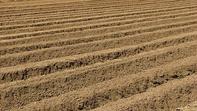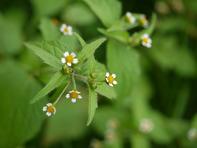There is a direct relationship between soil health and plant health, explains Alan Rosenberg in his book - Global Health in Crisis - the answer lies in the soil.

Plant Health
The reason: the more fertile the soil, the less plants will experience pest-related attacks as well as the severity of diseases. In other words, the healthier the soil, the healthier the plants which grow in it will be. Therefore, disease and pests are indications that soil health is poor.
The relationship between plant health and soil health has been developed by French biologist, Francis Chaboussou. Chaboussou formulated the theory of trophobiosis which states that ‘a pest starves on a healthy plant’.
Pests thrive on plants where there is a high build-up of water-soluble sugars, amino acids and minerals in the plant cells. Healthy growing plants have an active metabolism where these sugars, amino acids and minerals in the cells are utilised at the same rate at which it is manufactured. The plant cell fluids, therefore, do not have an excess of these substances, and not enough for pests to use as sustenance and multiply.
The use of agrochemicals disrupts plant metabolism leading to a slowdown in protein synthesis and a build-up of amino acids in the plant cells which makes the plant more attractive to pests.
Also, the additional application of nitrogen may also lead to an overproduction of amino acids.
It is imperative that the focus should rather shift from plant nutrition to soil nutrition. Correct soil nutrition will increase soil microbes which in turn will improve soil fertility, nutrient availability, and water infiltration.
This view is further affirmed by a University of California publication, Managing for Soil Health Can Suppress Pests. The publication stated ‘managing for soil health could become an integral component of pest management’.
Soil Health
Soil is healthy when biological, chemical and physical conditions are in balance - these conditions influence each other. For example, the physical condition of heavy waterlogged soil can lead to the loss of nitrogen, a chemical condition. Nitrate (a form of nitrogen) is denitrified and will be lost in the form of nitrogen gas (N2). When plants are under stress due to soil conditions (droughts, pH, nutrient deficiencies, compaction etc.) their resistance to pests and diseases are reduced.
Soil organic matter is the basis of healthy soil. Healthy soil, rich in organic matter has a diverse variety of soil microorganisms which help in the breakdown of organic matter and the subsequent release of nutrients available to the plant.
Microorganisms in the soil can benefit plants in a variety of ways. Certain bacteria, such as Bacillus, can excrete antibiotics which can protect plants from diseases while others stimulate plant root growth. Earthworms reduce soil compaction while mycorrhizal fungi help with improved phosphorus utilisation.
The first step to ensuring healthy thriving plants is to ensure healthy soil by adding lots of organic matter (compost, mulch, planting cover crops, etc.) to support a diversity of soil microbes.
Indicators of Soil Health

Healthy plants are a clear indicator of healthy soil. Healthy soil supports high populations of soil microbes. This includes earthworms and other soil life.
Erosion and crusting of the soil surface after planting indicates that something is wrong with the soil and that nutrients are lost or not available to the plant.
By Marinda Louw